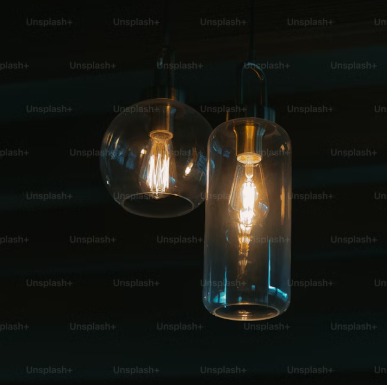
Lighting plays a crucial role in creating a comfortable and functional living space. However, occasional problems can arise that disrupt your home’s illumination. Understanding the causes behind these issues and knowing how to address them can save you time, money, and frustration. Below are common lighting problems, their potential causes, and effective solutions to get your lights shining bright again.
Flickering Lights
Flickering lights are not only annoying but may also signal a potential electrical issue. Possible reasons include:
- Loose Bulb: A bulb that isn’t screwed in tightly can flicker. The best solution is to turn off the power, tighten the bulb securely, and turn the power back on.
- Faulty Light Switch: A worn-out or malfunctioning switch may fail to maintain a stable connection. To fix this you can try replacing the switch with a new one if tightening doesn’t fix the flicker.
- Voltage Fluctuations: Power surges or inconsistent voltage can cause lights to flicker. If you notice flickering across multiple lights, consult an electrician to assess your home's electrical system.
- Loose Wiring: Loose connections in the circuit can pose a safety risk. So contact a licensed electrician immediately to inspect and fix the wiring.
Lights Dimming Unexpectedly
Sudden dimming can disrupt your activities and may indicate wiring or fixture issues. Possible causes are:
- Overloaded Circuit: Using multiple high-wattage appliances simultaneously can overload the circuit. So, distribute power usage across different circuits or upgrade your electrical panel if overloads are frequent.
- Faulty Dimmer Switch: Dimmer switches can wear out over time, leading to inconsistent performance. It's best to replace the dimmer switch with one that suits your light fixture’s requirements.
- Loose Wiring: As with flickering lights, loose connections can affect brightness. So have an electrician inspect and repair faulty wiring.
Buzzing or Humming Lights
A buzzing sound from your lights can be distracting and may indicate an electrical issue. Probable causes include
- Incompatible Dimmer Switch: Certain dimmer switches are not designed for LED or CFL bulbs. So ensure your dimmer switch is compatible with your bulbs and replace it if needed.
- Loose Wiring or Fixture Parts: Vibration caused by loose wiring or components can result in buzzing. Try to tighten loose parts and consult an electrician if the issue persists.
Bulbs Burning Out Quickly
If your bulbs frequently burn out faster than expected, there may be an underlying cause. The possible causes include:
- Excessive Vibration: Ceiling fans or fixtures prone to movement may cause filament damage in incandescent bulbs. You can use vibration-resistant or LED bulbs for better durability.
- High Voltage: Excess voltage can shorten the lifespan of bulbs. Contact an electrician who can install a voltage regulator to maintain stable power.
- Poor Fixture Quality: Low-quality fixtures may fail to regulate voltage efficiently. It might be better to consider upgrading to a higher-quality light fixture.
Light Not Turning On
A light fixture that doesn’t turn on can be frustrating and may stem from various causes. Possible causes might be:
- Burned-Out Bulb: The most common reason is a failed bulb. All you'll have to do is replace the bulb with a working one.
- Power Supply Issue: A tripped breaker or blown fuse can interrupt power flow. So check your breaker panel and reset any tripped breakers.
- Faulty Fixture or Wiring: Damaged wires or malfunctioning fixtures can also prevent lights from turning on. If replacing the bulb and checking the power supply doesn’t resolve the issue, contact an electrician.
Discolored Light Output
If your bulbs emit an unusual color or appear dimmer than usual, the problem may relate to the bulb or fixture itself which includes:
- Aging Bulbs: Older bulbs can discolor over time. So replace the bulbs with new ones.
- Incompatible Bulbs: Using the wrong type of bulb can result in inconsistent lighting. So ensure the bulb’s wattage and type are suitable for your fixture.
Extra Tips for Lighting Maintenance
- Regularly clean your light fixtures to ensure optimal brightness.
- Use energy-efficient LED bulbs to extend the lifespan of your lighting.
- Schedule periodic electrical inspections to identify potential issues early.
By identifying the causes of common lighting problems and applying the right solutions, you can keep your home’s lighting system safe, efficient, and long-lasting. Explore CAST Lighting's comprehensive guide on outdoor lighting maintenance. Learn practical tips to keep your outdoor lights shining bright, prevent common issues, and extend their lifespan. For more such tips, check out our journal.